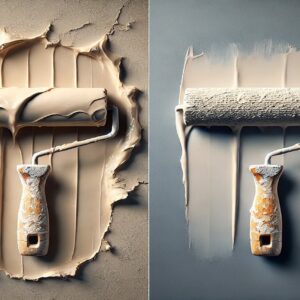A kitchen renovation is one of the most impactful home improvement projects you can undertake, transforming both the functionality and value of your home. This comprehensive guide will walk you through the essential steps of planning and executing your kitchen remodel, helping you create a space that perfectly balances beauty and practicality.
Understanding the Scope of Your Kitchen Renovation
Before diving into specific design choices, it’s crucial to determine the scope of your renovation project. Are you planning a complete gut renovation, or are you looking to update specific elements while keeping the basic layout? Understanding your project’s scope helps establish realistic budgets and timelines while ensuring all necessary components are considered.
Establishing Your Budget
Kitchen renovations typically cost between $13,000 and $40,000, depending on size and complexity. When planning your budget, allocate roughly:
- 30% for cabinetry and hardware
- 20% for labor costs
- 15% for appliances
- 10% for countertops
- 5% for lighting
- 20% for additional expenses and contingency
Designing Your Ideal Kitchen Layout
The layout forms the foundation of your kitchen’s functionality. The classic “work triangle” principle, connecting the refrigerator, stove, and sink, remains relevant in modern kitchen design. Consider these popular layouts:
The L-Shaped Kitchen
This layout maximizes corner space and works well in both small and large kitchens. It provides excellent workflow and can accommodate multiple cooks while maintaining an open feeling.
The U-Shaped Kitchen
Perfect for larger spaces, this layout offers abundant storage and counter space. It creates an efficient workflow and can include an island for additional functionality.
Selecting Materials and Finishes
Cabinetry Choices
Cabinetry significantly impacts both aesthetics and functionality. Modern White Oak kitchen Cabinets have gained popularity for their versatility and timeless appeal. The natural grain patterns and warm tones of oak create a welcoming atmosphere while providing durability for daily use. These cabinets work exceptionally well in both contemporary and traditional kitchen designs.

Countertop Materials
Your countertop choice affects both functionality and maintenance requirements. Popular options include:
- Quartz: Extremely durable and low-maintenance
- Granite: Natural beauty with unique patterns
- Butcher block: Warm appearance but requires regular maintenance
- Marble: Elegant but more susceptible to staining
Lighting Design Essentials
Proper lighting transforms your kitchen’s functionality and ambiance. Implement these three crucial lighting layers:
Task Lighting
Install under-cabinet lighting and pendant lights over work areas to illuminate food preparation spaces properly.
Ambient Lighting
Recessed ceiling lights or flush-mount fixtures provide overall room illumination.
Accent Lighting
Use strategic lighting to highlight architectural features or display areas.
Smart Storage Solutions
Maximize your kitchen’s functionality with these storage innovations:
Deep Drawer Organization
Replace traditional lower cabinets with deep drawers for pots and pans. Include dividers and organizers to maintain order.
Corner Solutions
Implement lazy Susans or pull-out corner systems to utilize otherwise awkward corner spaces effectively.
Creating a Timeline for Your Renovation
A well-planned kitchen renovation typically follows this timeline:
- Design Phase: 2-4 weeks
- Ordering Materials: 4-8 weeks
- Demolition: 1 week
- Rough Construction: 2-3 weeks
- Installation: 2-4 weeks
- Finishing Touches: 1-2 weeks
Managing the Renovation Process
Selecting Contractors
Research thoroughly and obtain at least three detailed quotes. Check references and verify licenses and insurance. Consider these factors:
- Years of experience
- Portfolio of similar projects
- Communication style
- Warranty offerings
Preparing for Construction
Create a temporary kitchen space during renovation:
- Set up a microwave and mini-fridge
- Use disposable plates and utensils
- Plan simple meals that require minimal preparation
Color Psychology in Kitchen Design
Understanding color psychology can significantly impact your kitchen’s atmosphere and functionality. Colors influence mood, appetite, and even perceived temperature. When selecting your color palette, consider:
Warm Colors
Reds and oranges stimulate appetite and create a welcoming atmosphere, making them popular choices for eating areas. However, use these colors strategically as accents to avoid overwhelming the space.
Cool Colors
Blues and greens promote calmness and cleanliness. While traditionally less common in kitchens, modern designs increasingly incorporate these shades, especially in two-tone kitchen schemes where they complement neutral base colors.
Neutral Foundations
Whites, grays, and natural wood tones provide versatility and timeless appeal. These colors create an excellent backdrop for both permanent fixtures and changeable decor elements.
Ventilation and Air Quality Considerations
Hood Selection
Proper ventilation is crucial for maintaining air quality and protecting your kitchen’s finishes. Consider these factors when selecting a range hood:
- CFM (Cubic Feet per Minute) requirements based on cooking habits
- Noise levels measured in sones
- Ducted vs. ductless options
- Style compatibility with your kitchen design
Additional Ventilation
Installing supplementary ventilation features like ceiling fans or window systems can enhance air circulation and comfort while cooking.
Ergonomic Design Principles
Creating an ergonomic kitchen reduces physical strain and increases efficiency. Consider these essential elements:
Counter Heights
Standard counter height (36 inches) works for most adults, but consider varying heights for specific tasks:
- Baking centers at 32-34 inches
- Chopping stations at 38-40 inches
- Island seating areas at 42 inches
Reach Zones
Organize storage based on frequency of use:
- Everyday items within easy reach
- Occasional items in secondary storage
- Seasonal items in less accessible areas
Incorporating Universal Design Elements
Universal design principles ensure your kitchen remains accessible and functional for all users, regardless of age or ability. This forward-thinking approach not only improves daily usability but also increases your home’s long-term value.
Accessible Features
Consider implementing these universal design elements:
- Pull-down shelving systems in upper cabinets
- D-shaped cabinet handles for easier gripping
- Motion-sensor faucets for hands-free operation
- Varied counter heights to accommodate different users
- Wide walkways (minimum 42 inches) for improved mobility
Safety Considerations
Integrate safety features that benefit all users:
- Non-slip flooring materials
- Well-lit work areas with minimal shadows
- Rounded corners on countertops
- Easy-to-reach emergency shut-off switches
- Heat-resistant surfaces near cooking areas
Future-Proofing Your Kitchen Design
Consider these elements to ensure your kitchen remains functional and stylish for years to come:
Sustainable Features
- Energy-efficient appliances
- LED lighting systems
- Water-saving faucets
- Recycled or sustainable materials
Smart Technology Integration
- Touch-activated faucets
- Smart appliances
- Automated lighting systems
- USB charging stations
A successful kitchen renovation requires careful planning, attention to detail, and strategic decision-making. By considering all aspects of the project, from design to execution, you can create a kitchen that not only meets your immediate needs but continues to serve your family well into the future. Remember to balance trendy features with timeless design elements to ensure your investment maintains its value and functionality for years to come.












Commented Posts